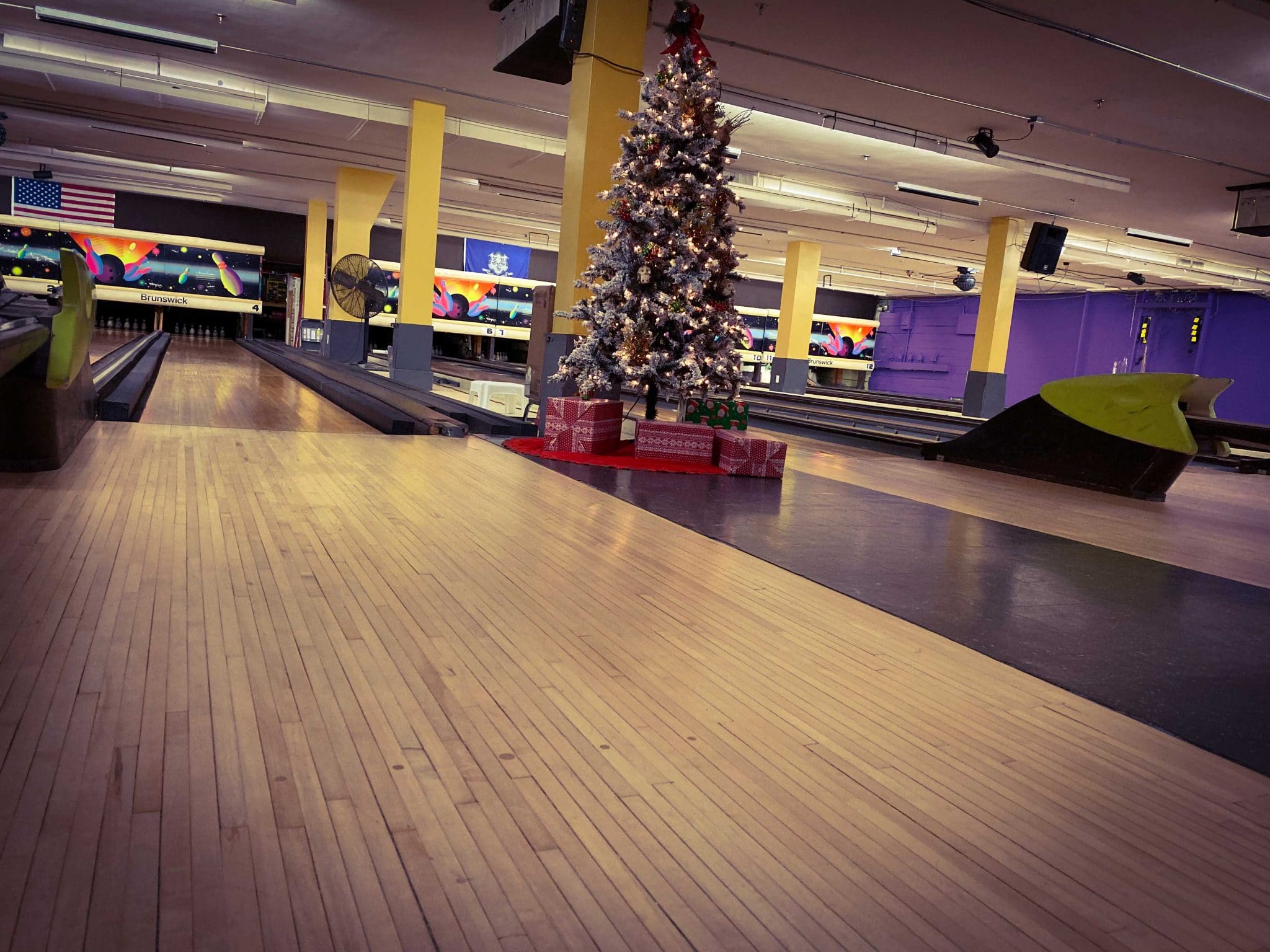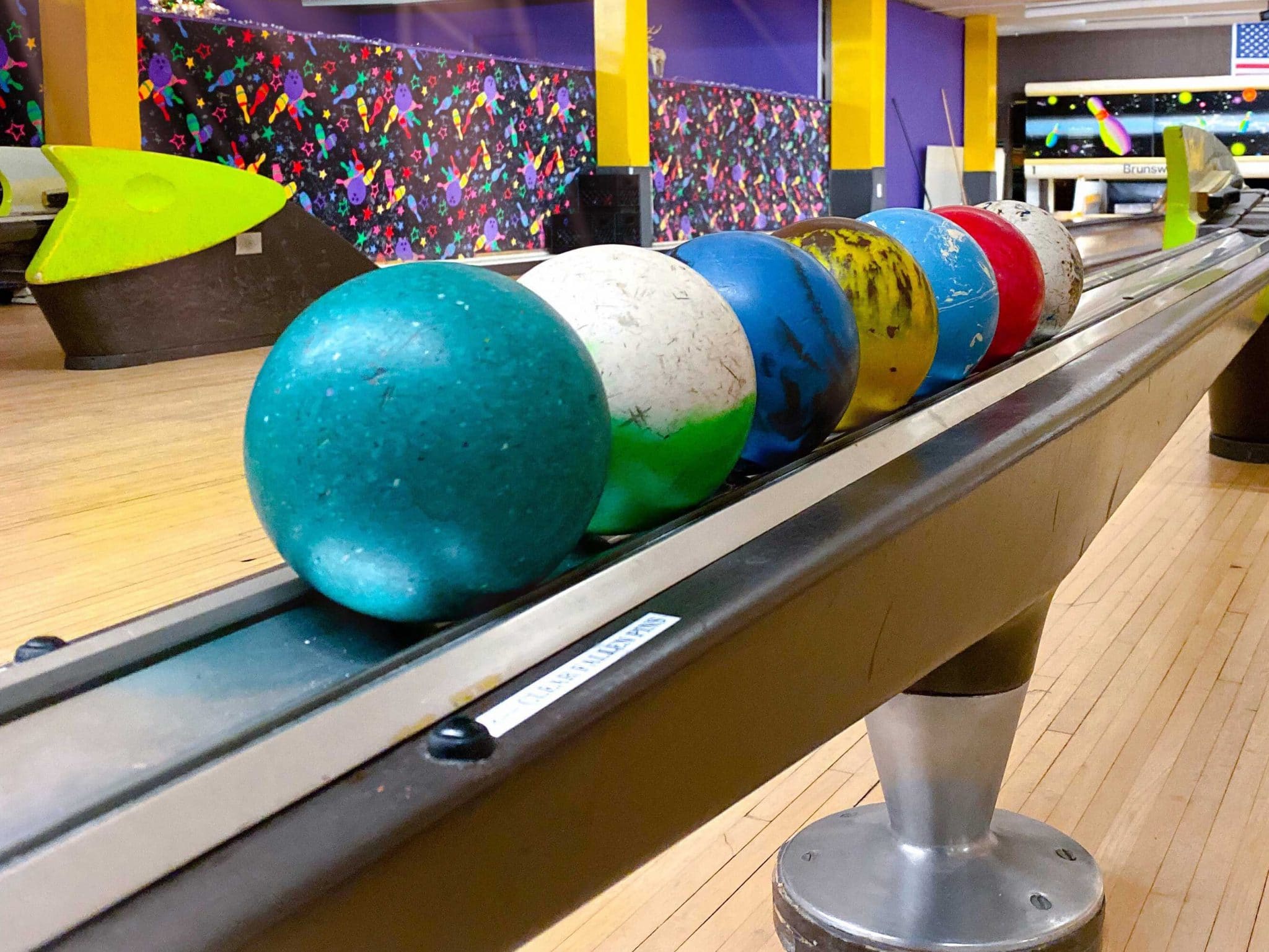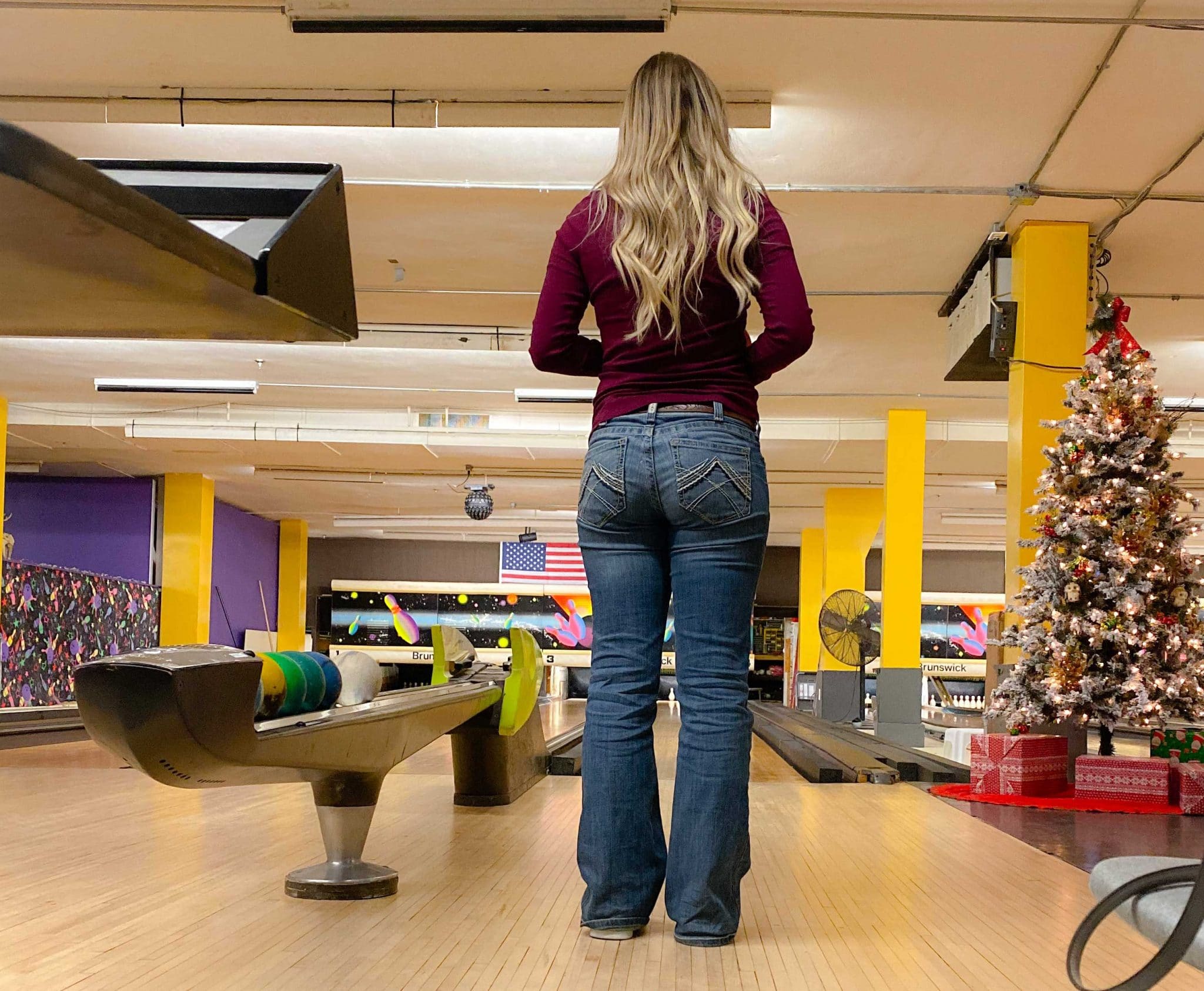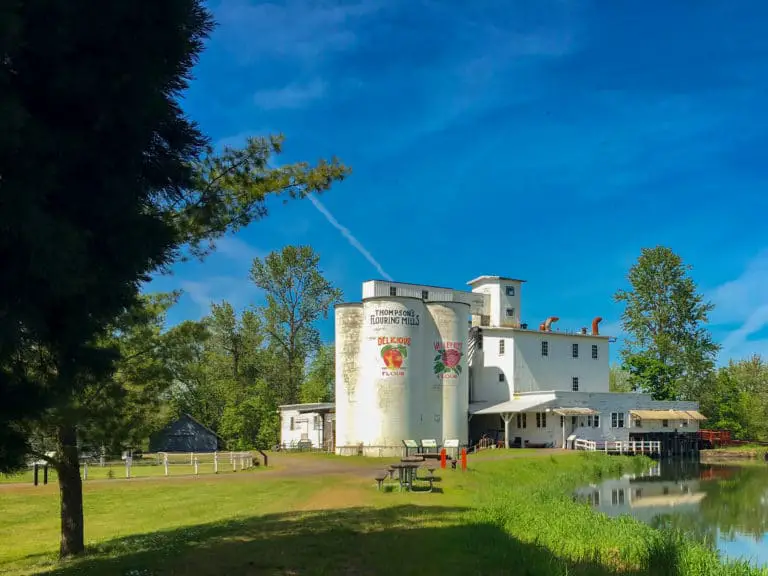Duckpin bowling in Connecticut is a traditional sport that is fun for all ages. Find a lane near you and learn more about this fading art.
Table of Contents
Duckpin Bowling Traditions in Connecticut

It’s our family tradition when we are in Connecticut to go duckpin bowling on the day after Christmas. We descend upon Ducks on the Avenue in West Hartford four to seven at a time, filling the space of two lanes and vying for championship honors.
Usually, we compete men against women. Now that the children are growing and we’ve begun to welcome sons-in-law into the family, that’s a possibility that we couldn’t dream of when the kids were young, and dad and son were woefully outnumbered.
Since all of the balls are roughly the same weight, selecting the right orb to roll down the lane is more a decision guided by superstition or fancy.
“This one looks pretty,” says daughter number two.
For the men, the decision is a little more scientific.
Son-in-law bends over the row of earthy-colored spheres, silently calculating something unknown before selecting one from the center of the pack. Dad takes a more physical approach, lifting two balls side-by-side, performing a scale of justice routine while he balances like weights one against another.
When your turn is up, duckpin bowling is like any other type of bowling. You take aim for the kingpin and launch the ball. For some the act is more graceful than others.
Dad has a knack for laying the ball smoothly on the floor with a rapid fire that makes short work of the lane. Some of the rest of us, myself included, find it hard to get the dance right, and take a more robotic approach.
We launch the ball with great intentions only to watch it roll from the center line and trace its way down the gutter.
What sets duckpin bowling apart from other types of bowling in Connecticut, or anywhere for that matter, is the size of the ball and the pins. Duckpin bowling balls are small, only five inches in diameter and weighing only 4 ounces. There are no finger holes either. Instead, they fit manageably in my hand and quite easily in a larger palm.

Pins are pint-sized as well, and lighter in weight than regular bowling pins. The small size of each playing piece requires greater precision to knock down multiple pins. Perfect games are rare.
The United States Bowling Congress reported over 55,000 perfect games (twelve strikes) in the 2013-2014 professional ten-pin season, but the duckpin pros know that there has never been a perfect game in duckpin bowling. A tad off to the right or left and the ball makes a tunnel through the setup, taking down the pins directly in its path while leaving the rest in vertical formation.
The History of Duckpin Bowling in Connecticut
Scattering duckpins is not an easy sport. It’s about as difficult as tracking down the origins of duckpin bowling. Some say that the roots can be found in the depths of a Baltimore gaming hall owned by baseball greats John McGraw and Robert Wilson. This would be around 1900.
However, newer evidence suggests that the game was being played near Lowell, Massachusetts as early as the 1890s.
Duckpin bowling has always been an East Coast sport. As it spread across the region, kingpin centers flourished in Rhode Island, Connecticut, and Maryland. Names like Wolfie Wolfensberger and Toots Barger topped the leaderboards, men and women alike rising to the duckpin halls of fame. They drew SRO crowds and loyalists as dedicated as any pro sport fan today.
As time moved on, duckpin bowling began falling out of fashion in Connecticut. The likes of football, soccer and lacrosse seized the fancy of community sports enthusiasts. For those not blessed with talent, it was easier to watch the pros from television, iPad or phone than to venture into underground alleys.
The Future of Duckpin Bowling at Risk

Society may have put duckpin bowling on a possible road to extinction, but its own past is accelerating the journey.
In 1953, Kenneth Sherman invented an automatic pinsetter. The machine was faster than hired pin boys and more accurate. Since duckpin bowling requires three rolls or turns per set, making pin setting faster and more efficient resulted in happier patrons and more games bowled in a night.
It was a boon for the duckpin bowling establishment until Sherman decided to shut down his operation nearly fifty years ago. At that time, Brunswick, the giant of ten-pin bowling, wanted to buy his patent. Fearing that Brunswick would stop making the equipment to put duckpin centers out of business, Sherman refused.
As a result, it’s hard to find parts for the pin setting machines which operate on 1,000 moving pieces, including cast iron gears. Duckpin bowling operators are quick to cannibalize on closing centers, stockpiling parts and pieces in backrooms and basements, but alleys are disappearing fast.
In 1963, there were around 450 duckpin bowling centers. Today, there are less than 50.
Sherman’s patent has been expired for close to thirty years, but without stronger demand for duckpin bowling, no one has shown an interest in resurrecting the duckpin pin setter.
It’s a catch twenty-two. Without parts for the pin setter, the game can’t grow, and without demand for the sport, no one is interested in manufacturing the pin setting machines.
Surviving Duckpin Bowling Alleys in Connecticut
The fading heyday of Duckpin bowling in Connecticut is always on my mind when we make our nearly annual pilgrimage to Ducks on the Avenue. If duckpin dies, we will miss out on traditions within traditions.
First, there is setting up the computerized score keeping system. My son always makes up new nicknames for each family member. Sometimes it’s hard for us to even know who is bowling what.
Then there is the renewed sense of learning something new, picking up the ball to find how little you remembered from the year before.
The new comradery—men against women—eases the passing of time and the growing up of children, giving us new traditions to revel in. No doubt someday soon, we’ll welcome grandchildren to our teams, and start a new generation of duckpin bowlers.
For as long as we can, we’ll continue to support duckpin bowling in Connecticut, as one of the few remaining areas where the sport is active.
Danbury Duckpin Lanes
4.5 (89) · Bowling Alley
Danbury, CT
(203) 744-4504
Devon Duckpin Lanes
551 Naugatuck Ave.
Milford, CT
(203) 872-4541
266 Main St
Winsted, CT 06098
860.379.5391
Lucky Strike Lanes, Inc.
185 Stafford Rd.
Mansfield Center, CT
860.423.8510
240 Platt Ave.
West Haven, CT
203.932.3202
What Does Duckpin Bowling Cost?
To give you an idea of the cost, a game at Ducks on the Avenue costs $7.50 per game per person with additional games at $3.50. Renting shoes is $4.50 per bowler. Shoes have always been clean and look almost new every time we go.
Be sure to check with the center of your choice before heading out for hours of operation. Some are only open certain days of the week but may be open on school holidays. Most are available for rent, if you’d like to keep duckpin alive through a special outing.
LOCATION

Hartford, CT
TRIP LENGTH

1-3 hours
NEARBY

Mark Twain House and Museum– 8 minutes away
Elizabeth Park and Conservancy– 10 minutes away
The Children’s Museum– 10 minutes away
Ray of Light Farm– 45 minutes away
Gillette Castle- 45 minutes away
Rock House Reservation– 1 hour away










